Transitioning from the Ego System to the Eco System Approach
=Blog post: 10 insights on the Ego-2-Eco Economy Revolution. By Otto Scharmer 2013
URL = http://www.blog.ottoscharmer.com/?p=557
10 insights on the Ego-2-Eco Economy Revolution
Otto Scharmer:
"We live in an age of profound disruption. Global crises, such as finance, food, fuel, water, resource scarcity and poverty challenge just about every aspect of society. Yet, this disruption also brings the possibility of profound personal, societal and global renewal. We need to stop and ask: Why do we collectively create results nobody wants? What keeps us locked into the old ways of operating? And what can we do to transform these root issues that keep us trapped in the patterns of the past?
The book Leading from the Emerging Future: From Ego-System to Eco-System Economies ponders these questions and proposes a new line of thought that is summarized in the 10 insights below.
1. The root cause of today’s global crises
The root cause of today’s global crises originates between our ears — in our outdated paradigms of economic thought.
Wherever you go and talk with people, they already know or feel that we are approaching a moment of disruption. You’ll find this is the case whether it’s a team at the top of global companies, governments, civil society organizations, or citizens gathered for grassroots-level community meetings. Most people today feel that we live in a time where something is ending, and something else wants to be born. This feeling is so common that we almost take it for granted now. Yet, just 10 or 15 years ago it didn’t exist the way it does today.
The symptoms of the current crises can be summarized in terms of three divides that disconnect self from the primary sources of life: ecological, social, and spiritual. The ecological divide manifests in symptoms like environmental destruction. We currently use 1.5 times the regeneration capacity of planet earth. In other words, we actually use 1.5 planets! The social divide manifests in increasing rates of poverty, inequity, fragmentation and polarization. And the spiritual divide shows up in increased rates of burnout, depression and in an increasing disconnect of GDP from the actual well-being of people.
The ecological divide is based on a disconnect between self and nature. The social divide disconnects self from other. And the spiritual divide is based on a disconnect between self and self — between the current self (which resulted from our journey of the past) and the emerging future self (that may result from our journey to the future).
What driving forces cause the deepening of the three divides? If the symptoms represent the visible part of our current reality iceberg above the waterline, what does the systemic structure below the waterline look like?
At first there is a set of eight systemic key issues. A structural disconnect between:
- the infinite growth imperative and the finite resources of planet earth;
- between the Haves and the Have Nots;
- between the financial and the real economy;
- between technology and real societal needs;
- between institutional leadership and people;
- between gross domestic product (GDP) and actual well-being;
- between governance mechanisms and the voiceless in our systems; and
- between actual ownership forms and best societal use of property.
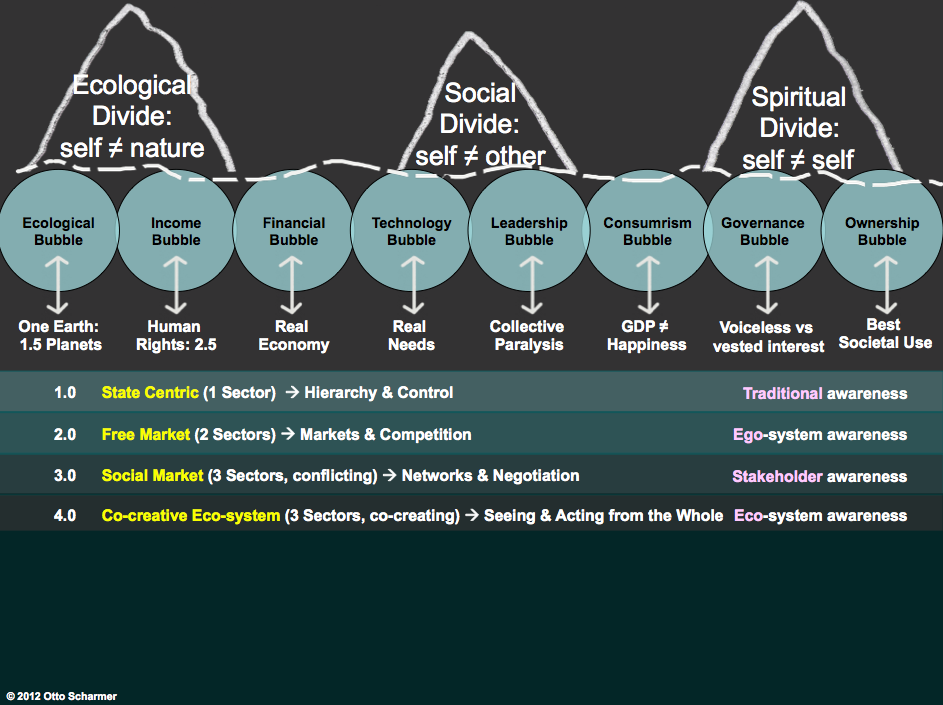
Figure 1: Three Levels: Symptoms; Systemic Disconnects; Paradigms of Economic Thought
These structural disconnects depict a broken system. But what is the root cause that gives rise to these disconnects and their systemic bubbles?
We believe that the most important root cause for these systemic disconnects originates directly from our paradigms of economic thought.
Like most things on earth, economic frameworks also have their life-cycle of birth, development, growth, and finally a phase of outliving their usefulness. The frameworks of modern economic theory are no exception. For example, after the world economic crises of the 1930s, the mainstream economic thinking evolved by opening up to Keynesian macroeconomic thought, which then shaped policy making for the better part of the remaining century. Then, after the stagflation crisis of the 1970s, mainstream economic thinking evolved again by opening up to Milton Friedman’s articulation of monetarism, which influenced policy making for the decades that followed. How then has the mainstream economic thinking evolved and opened up as a result of the global financial crisis in 2007/8?
Unfortunately, there has not been any significant evolution or opening of the mainstream thinking since the financial crisis, and our economic debates are still shaped by the same frameworks, faces, and false dichotomies that ushered in the crisis. This is even more worrisome as the 2007/8 crisis may well mark a bigger disruption than the two crises previously mentioned. This is precisely why the development of an advanced economic framework is one of our primary tasks today.
The main shortcomings of conventional economic frameworks and theory can be summarized in two words: externalities and consciousness. While externalities have been discussed at length, consciousness tends to not even be noticed.
2. The blind spot of modern economic thought
The blind spot of modern economic thought can be summarized with a single word: consciousness.
Consciousness doesn’t register as a category of economic thought. It happens to be a blind spot. However, in the reality of business leadership, the real role of a CEO has everything to do with it. For example, most work of managing change boils down to helping conflicting stakeholder systems to move from one way of operating to another, that is, from just seeing their own point of view to seeing the problem from multiple perspectives. Whenever people leave their own points of view and begin to appreciate the perspectives of other stakeholders as well, the consequence will be better collaborative relationships and better results.
Yet, in spite of its growing practical relevance, consciousness still doesn’t register as a category of economic thought.
3. The evolution of the economy and of modern economic thought
The evolution of the economy and of modern economic thought mirrors the footprints of an evolving human consciousness.
The history of the economy and of modern economic thought can be reconstructed as the embodiment of an evolving human consciousness. The modern economy is based on division of labor, which consequently has led to enormous leaps in productivity. Division of labor comes with the question: How do we coordinate all these individual activities to a coherent whole?
Viewed from this angle, we can differentiate four responses to this question, which include the stages of economic development that come with them:
1.0 Organizing around centralized coordination: This involves organizing around hierarchy and central planning, giving rise to centralized economies (socialism, mercantilism), and embodying the traditional forms of values and awareness.
2.0 Organizing around decentralized coordination: This involves organizing around markets and competition, giving rise to the second (private) sector, the free market economy. This embodies the state of ego-system awareness, that is, a concern for the well-being of oneself.
3.0 Organizing around special interest group driven coordination: This involves organizing around stakeholder negotiations and dialogue, giving rise to the third (social) sector and the social market economy (stakeholder capitalism). This embodies the state of stakeholder awareness, that is, a concern for the well-being of oneself and one’s immediate stakeholders.
4.0 Organizing around commons: This involves organizing around awareness based collective action (ABC) as a mechanism to transform stakeholder relationships from habitual to co-creative. This way of operating embodies eco-system awareness, that is, a concern for the well-being of other stakeholders and the whole.
Although each culture and country navigates its own journey through these states and stages, there is a tendency to move from 1.0 to 4.0. There also is a growing complexity through these states, as earlier forms continue to exist in the later stages, i.e., 1.0 institutions (like hierarchies) and 2.0 institutions (like markets) continue to exist in a 3.0 or 4.0 economy, but they do so in an evolved larger meta-context defined by the respective stage.[1]
Historic examples for 1.0 include the 18th century mercantilism. For 2.0 we only need look at the 19th century free market or laissez faire economies. The 20th century version of the social market economy or stakeholder capitalism brings us to 3.0. Examples of where the current 3.0 model hits the wall include various types of global externalities. The collapse of the climate talks in Copenhagen and the successful intervention of Wall Street banks after 2008 to prevent effective banking regulation to be passed are prime examples for the systemic failure of Capitalism 3.0 to deal with the major challenges of our time.
Thus, the evolution and complexity of the real economy is calling for an evolution of our awareness from 1.0 (habitual), 2.0 (caring about the well-being of my ego), and 3.0 (caring about the well-being of my ego and some of my direct stakeholders) to 4.0 (caring about the well-being of my ego, all stakeholders, and of the whole eco-system).
In other words, the economic imperatives of our time call for an evolution of our self from ego to eco, from one state of awareness to another. This is not just for moral reasons, but also for economic reasons because getting stuck in the state of the ego no longer makes for good business.
4. The problem with today’s capitalism
To paraphrase Einstein, the problem with today’s capitalism is that we are trying “to solve problems with the same consciousness that created them.”
The issues of the three divides may be more intense today, but they are not new. So what have we learned in dealing with them over the past 100 or so years?
We treat the symptoms. For each problem we created ministries, academic departments, NGO clusters, foundations, journals, conferences, career tracks, and so on. In short, we’ve established for each problem a silo solution, a small industry that responds to the respective issue on a symptom basis. If we have learned one thing from the past 100 years it might be: We cannot solve these issues by addressing them one symptom at a time. We keep missing the interconnectedness among the three divides and the deeper systemic root issues from which they originate. We are busy doing exactly what Einstein warned us against: reacting to problems with the same consciousness that created them.
We’re wasting our resources by trying to solve 4.0 (eco-system) problems with 2.0 or 3.0 response patterns. And by debating whether our response should be shaped by 2.0 or 3.0 mechanisms, we are wasting our public conversation with false alternatives. The real questions that we should be asking are: How do we advance our economic thought and action to 4.0? How do we construct pioneering pathways into the co-creative eco-system economy?
5. Helping stakeholder systems shift their way of operating
Helping stakeholder systems shift their way of operating from ego-system to eco-system awareness is the central leadership challenge of our time.
Helping stakeholder systems to shift their way of operating from ego- to eco-system awareness is “central” not only in the sense that it is shared across systems, but also in that the well-being and survival of our children and future generations depends on our ability to develop such collective capacities now.
Today’s companies can be likened to today’s nation states. Both are too small for the big problems and too big for the small problems. As a consequence, top-level leaders face major multi-stakeholder challenges that require them to link with and influence large groups of key stakeholders in their eco-systems or extended enterprise. The bigger your extended enterprise, the more success will depend on your ability to make the stakeholders in your system see each other, see the whole, and to care about the well-being of the whole.
We have been doing change work in a variety of systems, including business, education, health, government, and community-based organizations. What struck us throughout these experiences is that the fundamental leadership challenges across these systems are basically the same. They deal with convening large, complex stakeholder groups, making them listen to each other, bringing them on a journey of seeing the system through the eyes of other stakeholders, taking them to a place of deep reflection and stillness, and allowing them to connect to their own sources of inspiration and energy.
6. The shift from ego-system to eco-system awareness
The shift from ego-system to eco-system awareness requires a journey that involves walking in the shoes of other stakeholders and attending to the three instruments of inner knowing: open mind, open heart, and open will.
What does it take to shift the awareness of a stakeholder system from ego to eco? As described in the book Theory U: it takes a journey. A journey that not only involves walking in the shoes of other — often the least privileged — stakeholders, but a journey that involves the awakening of three inner instruments of knowing: the open mind, the open heart, and the open will.[2]
Open mind is the capacity to see with fresh eyes and to suspend old habits of thought. Open heart is the capacity to empathize, to see the situation through the eyes of another stakeholder. Open will is the capacity of letting-go and letting-come: Letting-go of old identities (“Us vs. Them”), and letting-come a new sense of possibility and self.
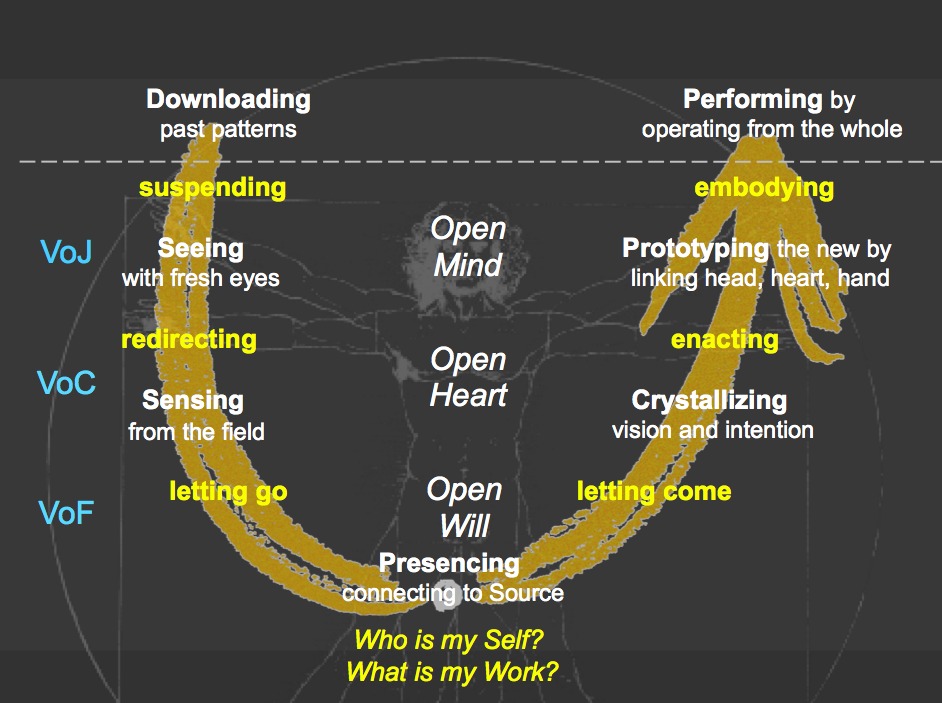
Figure 2: Theory U: One Process, Three Instruments (Open Mind, Open Heart, Open Will)
The effectiveness of accessing these three instruments depends on the ability to deal with the sources of resistance (“three enemies”):
- VoJ (Voice of Judgment): The VoJ shuts down the Open Mind by habitually judging self and others. All creativity techniques start with somehow suspending the VoJ.
- VoC (Voice of Cynicism): The VoC shuts down the Open Heart by offering an easy alternative to making oneself vulnerable. The problem with that easy exit is that it does the same thing as the VoJ: it blocks one’s opening process for accessing the deeper sources of creativity.
- VoF (Voice of Fear): The VoF tends to shut down the Open Will by not letting go but holding on to old identities, ideologies, and Us vs. Them belief structures.
The better we learn to deal with these three “enemies,” the higher our mastery will be in accessing the deeper sources of our co-creative knowing.
7. Addressing the current global crisis at its root
Addressing the current global crisis at its root calls for a 4.0 update of the economic operating system through reframing eight “acupuncture points” of the global economic system.
When in the late 19th and early 20th century the 2.0 laissez-faire capitalism hit the wall in the form of poverty, inequity, environmental issues, and cyclical financial crises, societies responded by creating a string of institutional innovations that set the stage for capitalism 3.0 (unions, federal reserve banks, legislation for labor, farmers, and the environment). Today, as capitalism 3.0 hits the wall of global externalities, we need another update of our economic operating system to 4.0.
This time the institutional innovations need to involve another set of acupuncture points. Here is a list of institutional innovations that all deal with closing the feedback loop of “matter” and “mind” in the economy, that is, of economic action and the well-being of the ecological-social-spiritual whole (“eco-system”).
They are:
- Nature: Close the feedback loop of production, consumption, reuse, and recycling through “earth-to-earth” or closed-loop design.
- Labor: Close the feedback loop from work (jobs) to Work (passion) by building infrastructures that foster and ignite inspired entrepreneurship.
- Capital: Close the feedback loop of capital by redirecting speculative investment into ecological, social, and cultural-creative renewal.
- Technology: Close the feedback loop from technology creation to societal needs in underserved communities through needs assessment and participatory planning.
- Leadership: Close the feedback loop from leadership to the emerging future of the whole through practices of co-sensing, co-inspiring, and co-creating.
- Consumption: Close the feedback loop from economic output to the well-being of all through conscious, collaborative consuming and through new well-being indicators such as GNH (Gross National Happiness).
- Coordination: Close the feedback loop in the economy from the parts to the whole through ABC (awareness-based collective action).
- Ownership: Close the feedback loop from ownership rights to the best societal use of assets through shared ownership and commons-based property rights that safeguard the interests of future generations.
As depicted in Figure 3, the journey from 2.0 to 4.0 (as spelled out in more detail through the Matrix of Economic Evolution in the book) is not only a journey from ego to eco, it is a journey of reframing the essence of economic thought around all eight acupuncture points that reintegrate matter and mind in the economy.
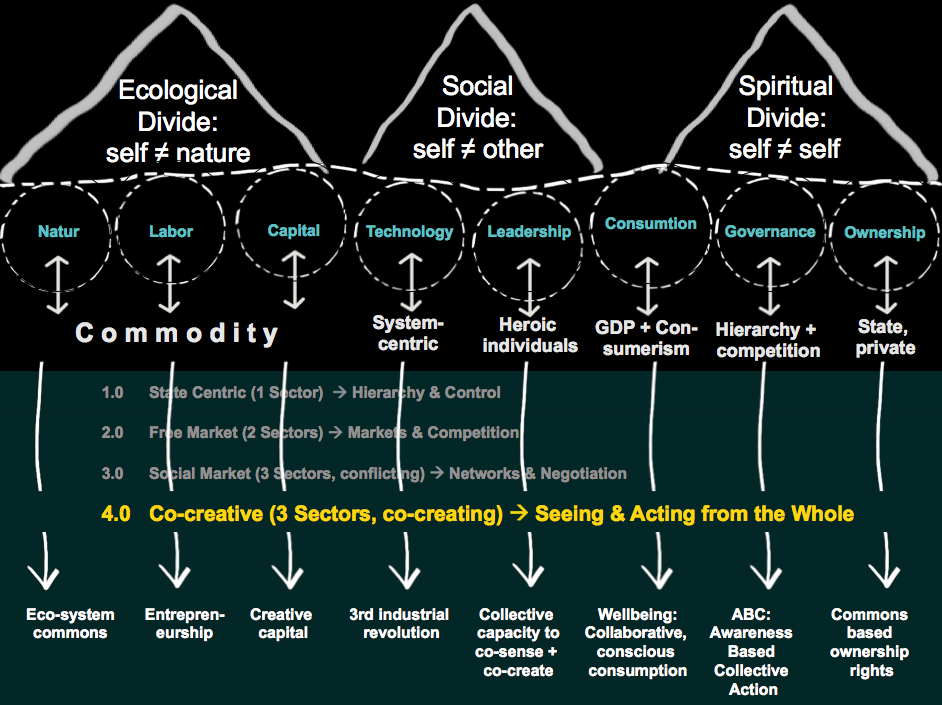
Figure 3: Eight Acupuncture Points of Transforming Capitalism to 4.0
For example, nature, labor, and capital are no longer conceptualized as a mere commodity but reframed as eco-systems, entrepreneurship, and creative capital, respectively.
8. Shifting the system to 4.0
Shifting the system to 4.0 requires a threefold revolution.
What does it take to put economy and society 4.0 onto its feet? It takes a threefold revolution: an individual, a relational, and an institutional inversion. Each inversion is a U-type of process as indicated in figure 2. It is a process where some deeper or dormant capacities are opening up or awakening. Inversion means turning inside-out and outside-in.
Individual inversion means to open up thinking (open mind), feeling (open heart), and will (open will) in order to learn to act as an instrument for the future that is wanting to emerge.
Relational inversion means to open up communicative relationships from downloading (conforming) and debate (defending) to dialogue (reflective inquiry) and collective creativity (flow) in order to tune as groups into the field of the future.
Institutional inversion means to open traditional institutional geometries of power from 1.0 and 2.0 forms of coordinating and organizing — centralized hierarchy and decentralized competition — to 3.0 and 4.0 forms of coordinating around co-creative stakeholder relationships in eco-systems that generate well-being for all.
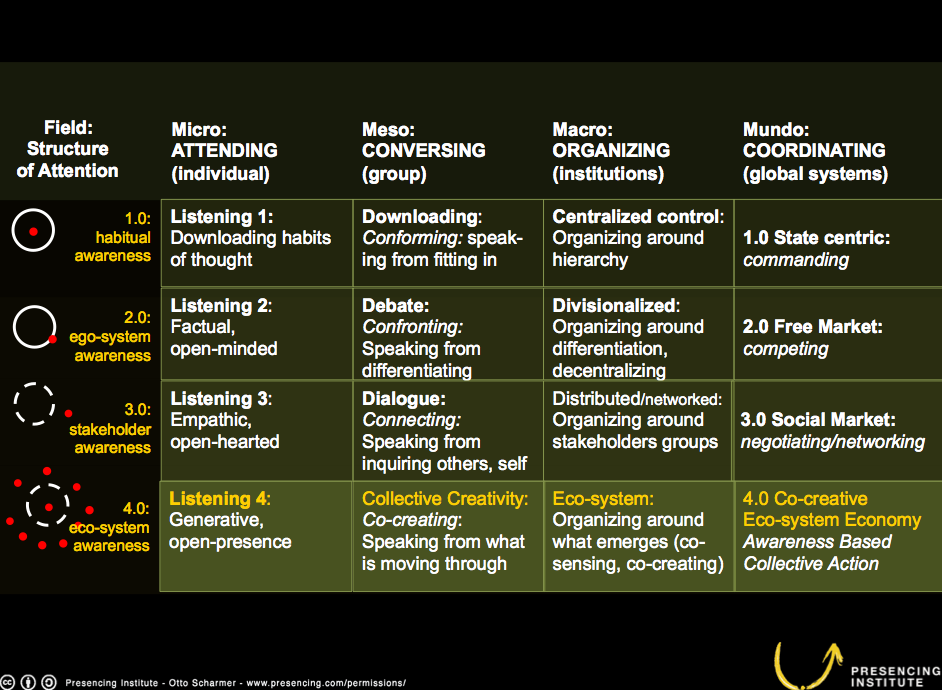
Figure 4: The Matrix of Social Evolution (all system levels, all structures of attention)
Figure 4 depicts the three transformations for the individual (column 1), the relational (column 2) and the institutional inversion (column 3 and 4) in the form of a Matrix of Social Evolution that integrates all system levels (micro-meso-maco-mundo) and all structures of awareness (1.0 to 4.0).
Some of the first research with this framework shows that many change makers do have level four experiences on the micro and meso level, but that the level four examples for the macro and mundo level are rare and seen as critical bottlenecks in the current development stages of the systems.
9. We need new types of innovation infrastructures
We need new types of innovation infrastructures in order to build collective leadership capacities on a massive scale.
Many people think that what’s missing in order to move to a new economy is just a set of better ideas. That, of course, is not the case. We need much more than new ideas. We need new innovation structures and social technologies that will allow groups to move from their habitual levels to the new co-create level 4.
These infrastructures will include:
- Co-initiating: Creating spaces for convening stakeholders around a shared eco-system.
- Co-sensing: Going to the places of most potential and observing with one’s mind and heart wide open.
- Co-inspiring: Creating spaces for connecting to the sources of creativity and self.
- Co-creating: Creating spaces for exploring the future by doing (prototyping).
- Co-shaping: Creating spaces for embodying and scaling the new through practices.
Of these infrastructures, the co-sensing and co-inspiring ones are particularly underdeveloped in society today. Trying to advance societal innovation by just talking about them or by talking about their final stages (number 4 or 5 of the above infrastructure list) is like playing a violin without a body, or to use another analogy, building a house without a foundation and ground floor.
What would be necessary today is an interconnected set of global sensing hotspots that would allow for local, regional, and global players to connect around specific issue areas in order to co-sense, co-inspire and co-create through multi-local prototyping.
10. A new leadership model
The shift from an ego-system to an eco-system economy requires a global movement that needs to be supported by a new leadership school.
That school should create collaborative platforms across sectors, systems, and generations and work through integrating science, art, and the practice of profound, awareness-based change.
We began with locating the root cause of today’s predicament between our ears and in our old patterns of thought, particularly our economic thought. To shift these patterns takes no less than an intentional global infrastructure (or leadership school) that focuses not only on a new framework, but also on practical methods and tools to realize the shift from ego to eco and how to awaken a new quality of thinking that links the head, heart, and hand.
Such a new leadership school would be a home base for the emerging global movement of 4.0-related transformation journeys. At the same time, it would prototype a 21st century action university that integrates three forms of knowledge: technical knowledge (know-what), practical knowledge (know-how) and transformation knowledge (know-who: self knowledge).
Here is a first set of principles that are essential for this type of school and which are designed for global-local replication:
- Engage systems at all levels and states: Engage systems by using the entire Matrix of Social Evolution
- Engage all levels of intelligence: Integrate open mind (IQ: intellectual knowledge), open heart (EQ: emotional and relational knowledge), and open will (SQ: self knowledge).
- Systems Thinking: Integrate methods and tools derived from 30 years of organizational learning research and practice.[3]
- MOOCs: Use massive open online courses that combine course delivery with interactive personal, small-group dialogue and the presence of a global community of change makers that effects transformative change.
- Deep immersion: Use deep dive learning journeys and generative listening practices in order to connect communities and places of most potential.
- Science 2.0: Use scientific methods that let the “data talk to you.” The challenges of this century involve extending the concept of science beyond looking exclusively at exterior data (third-person view). We need to bend the beam of scientific observation back upon the observer in order to investigate the more subtle levels of experience of the second- and first-person view.[4]
- Presencing: Use practices that allow leaders to sense and actualize the emerging future and to clarify the two root questions of creativity: Who is my Self? What is my Work?
- Power of Intention: Focus on the capacity to connect with the deeper intention of one’s journey, connecting us more deeply with one another, the world and ourselves.
- Prototyping: Link head, heart, and hand in order to create living examples and prototypes that allow us to explore the future by doing.
- Power of Place: Complement the massive expansion of online learning with an equally massive global network of vibrant entrepreneurial hubs that focus on activating co-sensing and co-creating as a gateway for unleashing entrepreneurial potential. Great innovations happen in places. Learning how to design and hold spaces for reflection, generative conversation, and system-wide transformation is a mission critical capacity today.
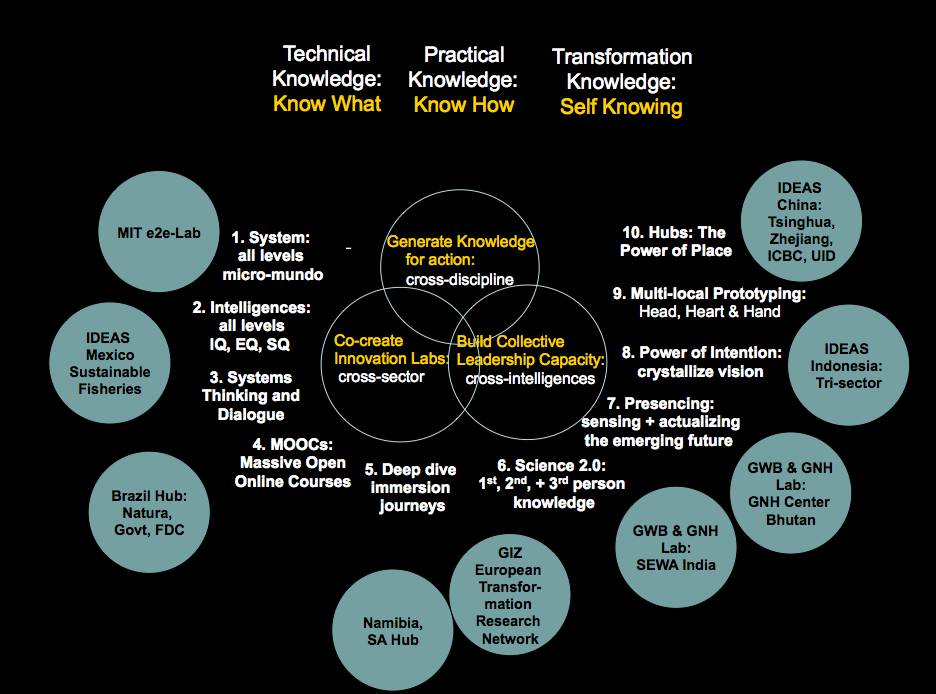
Fig. 5: An Ego-2-Eco Transformation Leadership School—A Set of Global Acupuncture Points
Profound personal, societal and global renewal is not only possible; it is crucial for our planetary future. What is needed are change makers willing to lead from the emerging future; leaders who are willing to learn about and practice the journey from ego-system to eco-system economies. We have the places, living examples, frameworks and tools in hand. Now what we need is the co-creative vision and the common will to bringing it into reality." (http://www.blog.ottoscharmer.com/?p=557)
More Information
- Otto Scharmer
- Book review: From Ego-System to Eco-System Economies
References
- ↑ Notice that the distinctions from 1.0 to 4.0 only apply to the modern economy. Pre-modern states or economic and social development share many same features, but also some significant differences with 4.0. The perspective presented in the book combines both Eastern—cyclical—and Western—linear—aspects, linking them to a spiral or U based integral view.
- ↑ Scharmer, C. Otto (2009), Theory U: Leading from the Emerging Future as It Emerges: The Social Technology of Presencing (San Francisco, CA: Berrett-Koehler).
- ↑ Senge, P., (1990), The Fifth Discipline: The Art and Practice of the Learning Organization (NY: Random House).
- ↑ Scharmer, C.O., and P. Senge (2001), Community Action Research. In: Peter Reason and Hilary Bradbury (eds.), Handbook of Action Research. Thousand Oaks, Calif.: Sage Publications.